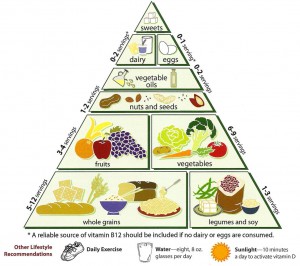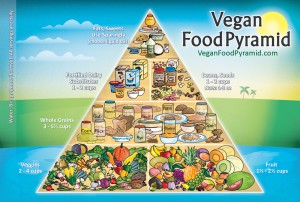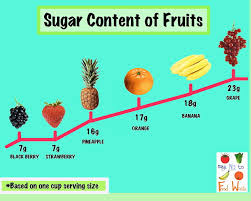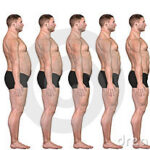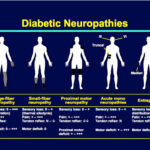This is one area many are still unsure of. It is generally assumed cutting down the carbohydrate intake to as low as possible when one is a diabetic helps in control of diabetes.
” Gastronomic voyeurs have long proposed that eating is a holistic form of exercise involving various muscles necessary for scooping up the food, chewing it and getting the food to the mouth.”
Restaurants and supermarkets have taken marketing to whole new level. Terms such as biggies, jumbos, king size, grand,supreme and prompts such as all-you-can-eat -buffets and two-for-one -specials are enough to lure the unwary.
A good diet should contain 50% carbohydrate, 30% fat and 20% protein according to the American Diabetic association. One should aim for a weight loss of 5-7 % of the body weight. Most of the diets turn out to be failures as they are not practical or planned to give drastic results. Normally diabetics find it difficult to reduce weight and maintain weight loss when compared to a non diabetic. Some of the medicines taken for diabetes treatment also can cause weight gain.
Generally pregnant women and growing up children need more calories.
Culture or “habits” may have taught many of us to eat in response to any triggers such as stress, boredom, and guilt. We may multitask and eat and then wonder,” How on earth did I manage to eat that whole bag of chips or that large burger?”
Food , as a four letter word, is both a necessity as well as a burden when taken in excessive amounts. You must be familiar with the age old saying, “Eat to live and not live to eat”.
As one ages, the body weight may increase as you may be consuming more calories than needed. This coupled with the decreased physical activity and excuses such as “too tired from work”, “I just need to sleep for some time” ,” I shall grab a bite and then start”, and sink into the cozy sofa to seal the fate.
Calories
The daily need of calories depend on the following:
• The body size
• The age
• The height and weight.
• Level of activity
• Gender- whether male or female
• If pregnant.
Levels of activity
A person is labelled non active if the person is doing just normal activities such as going to work, shopping and going to school.
If the person does some physical activity such as walking for 2-4 kms daily or some form of exercise besides regular activity, the person is labelled moderately active.
If the person does heavy workouts like a gym workout, good games of squash, tennis or badminton or swimming, cycling, or walking more than 4 kms a day, the person is labelled very active.
One kilogram of body weight will equal 7700 calories. To reduce one kilogram over a week, one will have reduce 1100 calories daily. This may sound impossible. But, reducing the sugar intake by just one spoon daily can reduce the calorie intake by 500 calories. That is not a big burden, is it ?
The table given below will show the caloric needs based on age, gender and level of activity
|
|
Males | Females | ||||
| Non active | Mod active | very active |
Non active | Mod active |
very active |
|
| 10 | 1600 | 1800 | 2000 | 1400 | 1800 | 2000 |
| 11 | 1800 | 2000 | 2200 | 1600 | 1800 | 2000 |
| 15 | 2200 | 2600 | 3000 | 1800 | 2000 | 2400 |
| 18 | 2400 | 2800 | 3200 | 1800 | 2000 | 2400 |
| 21-25 | 2400 | 2800 | 3000 | 2000 | 2200 | 2400 |
| 26-35 | 2400 | 2600 | 3000 | 1800 | 2000 | 2200 |
| 36-45 | 2200 | 2600 | 2800 | 1800 | 2000 | 2200 |
| 46-55 | 2200 | 2400 | 2800 | 1600 | 1800 | 2200 |
| 56-65 | 2000 | 2400 | 2600 | 1600 | 1800 | 2000 |
| 66-75 | 2000 | 2200 | 2600 | 1600 | 1800 | 2000 |
| >76 | 2000 | 2200 | 2400 | 1600 | 1800 | 2000 |
If one observes the above table carefully, the calorie intake for both gender groups is maximum between the ages 18-25 . Thereafter the recommended caloric intake comes down to that of a 10-15 year old irrespective of your level of activity. Well, that is something to seriously think about.
A healthy breakfast will include whole grains, lean protein such as peanut butter, lean meat, fish, poultry and hard boiled eggs, low fat dairy such as yoghurt, cheese and milk and a portion of fruits and vegetables.
Know the food
Starches
Starches are bread, grains, cereal, pasta, and starchy vegetables like corn and potatoes. They provide carbohydrate, vitamins, minerals, and fiber. Whole grain starches are healthier because they have more vitamins, minerals, and fiber.
Eat some starches at each meal. Eating starches is healthy for everyone, including people with diabetes.
Examples of starches are bread , pasta, corn, potatoes, rice, cereals, beans, lentils, yam
What are healthy ways to eat starches?
• Buy whole grain breads and cereals.
• Avoid fried and high-fat starches such as regular tortilla chips and potato chips, french fries, pastries, or biscuits. Try fat-free popcorn, baked or potato chips, baked potatoes, or low-fat muffins.
• Use low-fat or fat-free plain yogurt or fat-free sour cream instead of regular sour cream on a baked potato.
• Use mustard instead of mayonnaise on a sandwich.
• Use low-fat or fat-free substitutes such as low-fat mayonnaise or light margarine on bread, rolls, or toast.
• Eat cereal with fat-free (skim) or low-fat (1%) milk
Vegetables
Vegetables provide vitamins, minerals, and fiber. They are low in carbohydrate. Examples of vegetables are lettuce , broccoli, vegetable juice, spinach, peppers, carrots, tomatoes, Celery, cabbage, greens.
What are healthy ways to eat vegetables?
• Eat raw and cooked vegetables with little or no fat, sauces, or dressings.
• Try low-fat or fat-free salad dressing on raw vegetables or salads.
• Steam vegetables using water
• Mix in some chopped onion or garlic.
• Use a little vinegar or some lemon or lime juice.
• Add a small piece of lean ham or smoked turkey instead of fat to vegetables when cooking.
• Sprinkle with herbs and spices.
If you do use a small amount of fat, use canola oil, olive oil, or soft margarines (liquid or tub types) instead of fat from meat, butter, or shortening.
There are two types of vegetables- the starchy and non starchy. The starchy vegetables can increase the sugar levels- potatoes, corn and peas are included.
Non starchy vegetables include broccoli, cabbage, sprouts, carrots, cucumber green, egg plants, ladies fingers (Okra), mushrooms, bell peppers, iceberg lettuce, tomatoes to name a few. These help in adding fiber and also keep the stomach full without increasing the sugar levels.
Fruits
Fruits provide carbohydrate, vitamins, minerals, and fiber.
What are healthy ways to eat fruits?
• Eat fruits raw or cooked, as juice with no sugar added, canned in their own juice, or dried.
• Buy smaller pieces of fruit.
• Choose pieces of fruit more often than fruit juice. Whole fruit is more filling and has more fiber.
• Save high-sugar and high-fat fruit desserts such as peach cobbler or cherry pie for special occasions.
• Feel the fruits before purchasing them. If fruits are very soft, they are sweeter.
• Generally speaking bananas from the Philippines, grapes, dates, mangoes, water melon, cherries and pineapple are very sweet
Milk
Milk provides carbohydrate, protein, calcium, vitamins, and minerals.
What are healthy ways to have milk?
• Drink fat-free (skim) or low-fat (1%) milk.
• Eat low-fat or fat-free fruit yogurt sweetened with a low-calorie sweetener.
• Use low-fat plain yogurt as a substitute for sour cream.
Meat and Meat Substitutes
Meat and meat substitutes provide protein, vitamins, and minerals.
Examples of meat and meat substitutes include chicken , fish, eggs, peanut butter
What are healthy ways to eat meat and meat substitutes?
• Eat chicken or turkey without the skin.
• Cook meat and meat substitutes in low-fat ways: broil , grill, stir fry, roast, steam and micro wave
• To add more flavor, use vinegars, lemon juice, soy sauce, salsa, ketchup, barbecue sauce, herbs, and spices.
• Cook eggs using cooking spray or a non-stick pan.
• Check food labels. Choose low-fat or fat-free cheese.
Fiber diet can slow the gastric emptying and slow down the rate of glucose absorption from the intestine. Water soluble fiber includes oats and bran. Men need 38 g of fiber day and women need 25 g a day.
But, do remember………
- This does not mean one should avoid carbohydrates in total. Please be reminded that carbohydrates are needed for setting up the energy levels during the day.
- One should have a hearty breakfast, a moderate lunch and a light dinner.
- It will be worthwhile to have an approximate 45 grams carbohydrate inclusion with each of the main meals ( Normally a healthy person has 3 main meals and snacks in between).
- Spread the carbohydrate intake during the day to help one curb hunger and thereby prevent overeating.
- A toast of bread with an egg will fill you longer than a couple of toasts with jam.
- Please be reminded that fish, chicken, Turkey Ham, eggs do not have carbohydrate.
- But, addition of cheese or cream or milk while beating the gees to make them creamier, can shoot up the carbohydrate content.
- Addition of bread crumbs and other coverings such as chick pea flour or corn flour can also send the sugar levels high.
- All vegetables growing below the ground do contain some amount of carbohydrate and so excess consumption of the same can upset the sugar levels.
- Those who are on insulin roughly need a unit of insulin for every 12-15 grams of carbohydrates taken.
Given below are 3 options for a meal containing 45 grams of carbohydrates
Option 1:
One cup of cooked oatmeal – 32 gram carbohydrate
Half medium sized banana – 13 grams of carbohydrate
A Hard boiled egg and some black coffee – no carbohydrate
Option 2:
2 scrambled eggs – no carbohydrate
A slice whole wheat bread – 15 grams
An orange – 18 grams
A cup of low fat milk – 14 grams
Option 3
3 Rye bread pieces – 24 grams
Half cup non fat cheese – 5 grams
One cup blueberries – 15 grams
Avoid fizzy carbonated drinks and sugar free items as one may compensate by eating or drinking more.
Some tips for breakfast:
Those who eat a healthy and balanced breakfast regularly manage their body weight better as well as have better concentration. The breakfast is what sets the tempo and energy levels for the day.
• Turkey sandwiches are a good option.
• Smoothies with berries and low fat yoghurt are another good option
• Whole grain oat meal with fruits or nuts
• Making a French toast with whole grain bread dipped in batter made from egg white, cinnamon powder, salt to taste and vanilla essence makes a delicious dish. This can be topped with thinly sliced apples , berries or bananas.
• Do not watch television or use the computer while eating as many studies show an increased consumption of food and improper chewing of the food as well.
• Mid day snacks can be either fruits, low energy granola bars, non salted or non sweetened nuts comprising pistachios, walnuts, almonds, pecan , pine nuts and hazel nuts.
• 2 tablespoonfuls of olive oil is enough a day. Light olive oil is more processed than either the virgin or extra virgin olive oil. The light olive oil is lighter in color, but not lighter in calories or fat. Even too much of olive oil is not healthy.
• Having a bowl of salads is a healthy low calorie option ( of course without the rich creamy sauce or dressing).
Diet
• Base meals on starchy foods such as potatoes, bread, rice and pasta, choosing wholegrain where possible.
• Eat plenty of fiber-rich foods – such as oats, beans, peas, lentils, grains, seeds, fruit and vegetables, as well as wholegrain bread and brown rice and pasta.
• Eat at least five portions of a variety of fruit and vegetables each day, in place of foods higher in fat and calories.
• Eat a low-fat diet and avoid increasing your fat and/or calorie intake.
• Eat as little as possible of: fried foods, fizzy drinks and confectionery high in added sugars
• Eat breakfast.
• Watch the portion size of meals and snacks, and how often you are eating.
• For adults, minimize the calories you take in from alcohol.
• Chew food thoroughly rather than gulping down the food.
• A small gesture such as cutting back on a spoon of sugar a day or even using the salad dressings or mayonnaise as dips rather than mix with the salads can cut back on calories.
- Try having food on a 9 inch plate with half the plate comprising non starchy vegetables, the other quarter comprising one half of starchy vegetables or grains and the other quarter with protein. The tendency to have plate of 12 inches is quite common these days to get value for money.
- Some dairy product can be added such as glass of low fat milk or low fat yoghurt. No second helpings! Food must not be more than an inch deep in plate ………!
- Eat slowly, chew well. It gives enough time for the brain to register the stomach is full.
- If you feel hungry after meals, try brushing your teeth or drinking water or having non starchy vegetables.
Some tips:
- Eat more of vegetables which are non starchy ( those grown below the ground contain more starch)
- Choose whole grains instead of processed grains
- Use liquid oils rather than solid fats (solid fats contain high amounts of saturated fats which have high calories)
- Use non fat or low fat dairy products
- Drink water in plenty. Use less of fruits juices, cocktails, alcoholic beverages.
- Lentils and kidney beans have more proteins and less fat
- Beware of high calorie snacks which taste good
- Beware of junk food.
Some of the commonly used items and their caloric values:
Item Quantity Calories
Canned beans ½ cup 127
Bread One loaf 70
Normal butter ( salted) Big spoon 102
Non fat creamy cheese 28.35 g 23
Low fat cheddar cheese 28.35 g 79
Half fat creamy cheese 2 big spoons 64
Full fat mozzarella 28.35 g 90
Non fat yoghurt Cup 137
Flavored non fat yoghurt Cup 162
Low fat yoghurt Cup 155
Flavored low fat yoghurt Cup 250
Full fat yoghurt Cup 150
Flavored full fat yoghurt Cup 292
Non fat milk Cup 86
Full fat milk Cup 150
Boiled egg One 66
Egg mixed with oil fried 2 197
Fried falafel 28.35 g 111
Dried dates 5 114
Fried potatoes ½ cup 87
Fruit juice Cup 117
Beef 85.05 g 176
Roasted beef 85.05 g 211
White rice ½ cup 103
Brown rice ½ cup 108
Spaghetti macaroni Cup 197
Nuts ¼ cup 161
Peanut ¼ cup 212
Almonds ¼ cup 211
All oils One big spoon 120
Mushroom Cup 18
Mixed vegetables 1 cup 38
Ice cream 10-12% fat ½ cup 143
Fruit salad ½ cup 47
Chicken 28.35 g 56
Cereals:
Some have cereals with milk or some just put in a handful or two into their mouth and chew on them. The market is flooded with innovative labels and cereal boxes have attractive packs to lure the people. Most of the cereals are made targeting the kids and so they are rich in sugar.
• Go for the ones made for adults
• Read the nutrition labels well
• If sugar is written near the top half of the label, it means the sugar content is more.
• High fructose corn syrup, honey coated cereals, dextrose are all forms of sugar.
• Look for serving size- some may have one cup, some half a cup
• Look for calories per serving- Go for the ones which have < 160 cals per serving.
Go for adequate portions of vitamins and minerals, have some fruits and vegetables and limit trans fats, saturated fats.
Did you know?
• Stress levels and infections can increase the sugar levels.
• Sports drinks contain as much sugar as in a fizzy drink
• Dried fruits contain more carbohydrates
• Birth control pills can increase the sugar levels.
• Prolonged moderate intensity exercise can predispose to low sugar during or after the exercise
• High intensity exercise for a short time can lead to high sugars!
• Cold temperatures and high altitude can increase the risk of low sugars
• Repeated episodes of low sugar can reduce the body`s ability to recognize low sugar. The counter regulatory response by the body is also blunted in such patients.
Is this the shape of things to come?
This is an interesting concept to follow:
To get the maximum of the food one has try these tips:
Pick food from different groups such as using fruits, vegetables, low fat milk, yoghurt, whole grain bread, pasta, brown rice, lean meat, fish, poultry and eggs.
Keep a track of unhealthy eating habits:
- The day and time of the day
- The mood at that time
- What one was doing at that time
- The location
- Portion sizes











